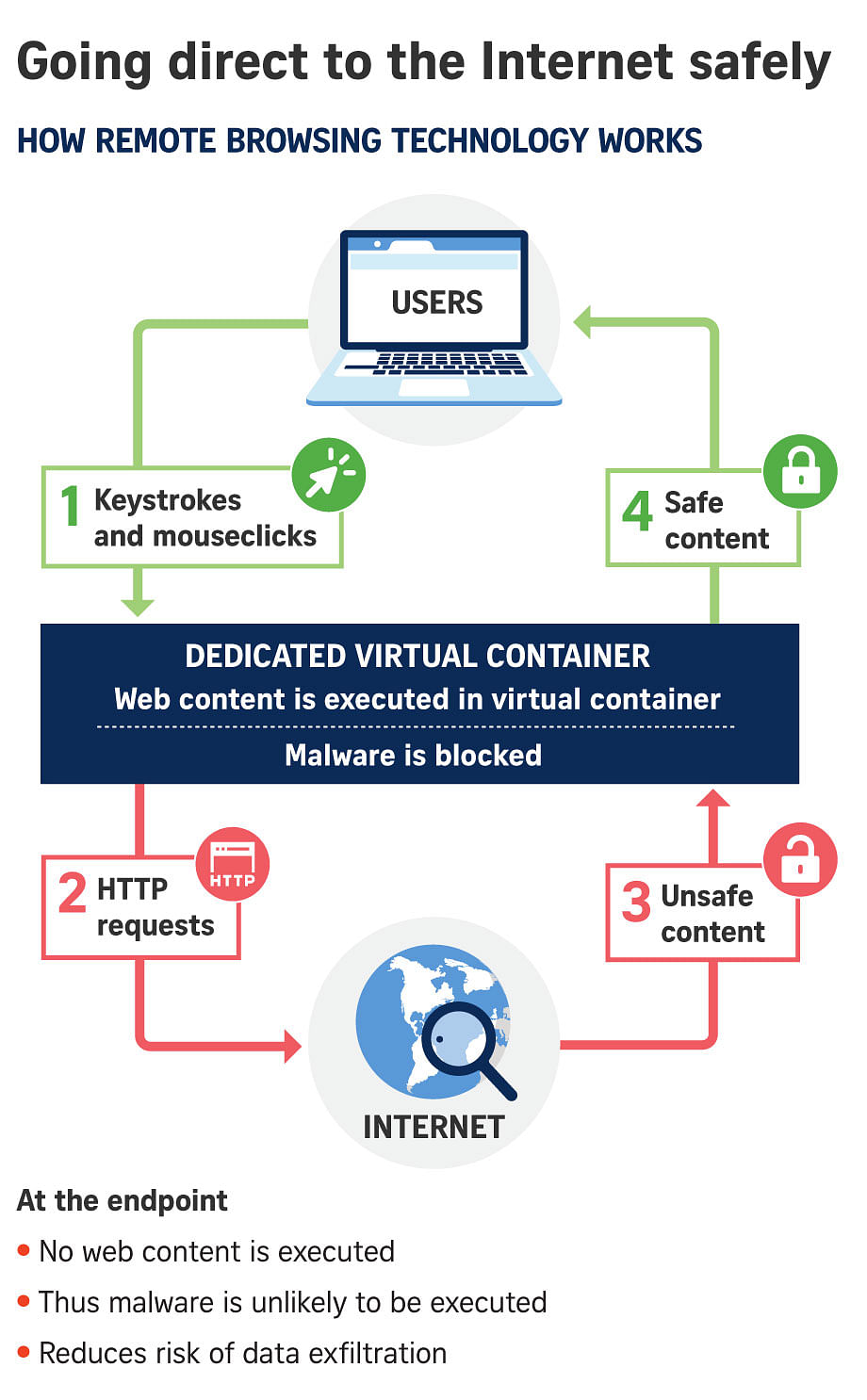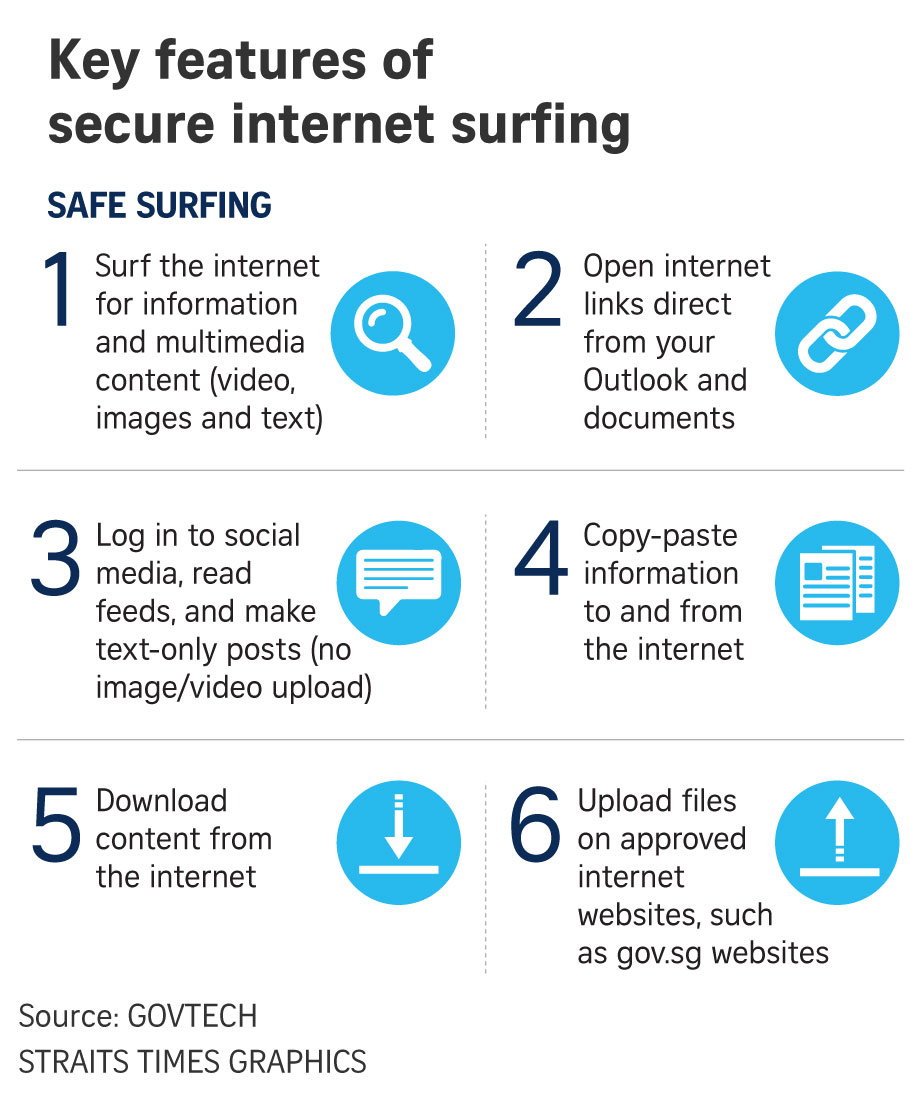The majority of the 146,000 public servants here will be able to access the Internet securely without the need for a separate device come Nov 2, thanks to a new remote browsing technology solution.
Secure Internet Surfing (SIS) will allow public servants to use their work laptops when surfing the Internet for information.
They will also be able to log in to social media sites to make text-based posts, as well as open links directly from e-mails and documents, the Smart Nation and Digital Government Group (SNDGG) said yesterday.
SIS replaces the current model of Internet surfing separation (ISS), which delinks public servants' work systems from Internet access to safeguard government data.
A total of 108,000 public servants will move over to SIS, with about 18,000 who have to handle classified information continuing to use a separate device.
The remaining 20,000 are not under Internet surfing separation.
SNDGG said the roll-out of SIS, which was made possible by recent advances in remote browsing technology, will improve productivity across the public service.
It will also reduce the costs of upgrading or maintaining additional Internet-accessible machines.
"Different combinations of technologies can now be implemented together to provide multiple layers of security control, and for us to have in place a more advanced and secure system to safeguard government data," SNDGG said.
Remote browsing technology works by creating an isolated container, which handles all Internet content accessed by the user and prevents direct interaction between government systems and malware or viruses lurking on the Internet.
The container can also be configured to filter out certain types of content deemed unsafe, to further reduce the risks of malware infection and data theft.
Public servants on SIS will also be able to upload files to the Internet, but only to approved websites.
ISS was launched in 2016 and rolled out fully across the public service in 2017.
SNDGG said ISS was implemented as there were no "suitable mature" solutions or products at the time to enable public servants to access the Internet securely.
It was also introduced on a temporary basis across all public healthcare institutions in 2018, following a SingHealth breach that involved the data of 1.5 million patients and is Singapore's worst cyber attack to date.
An Integrated Health Information Systems spokesman said yesterday that the public healthcare sector is working to implement a similar solution to SIS, with testing and evaluation already completed.
"Due to the sensitive nature of healthcare systems, the implementation plan is currently being reviewed by the relevant authorities," the spokesman said.




